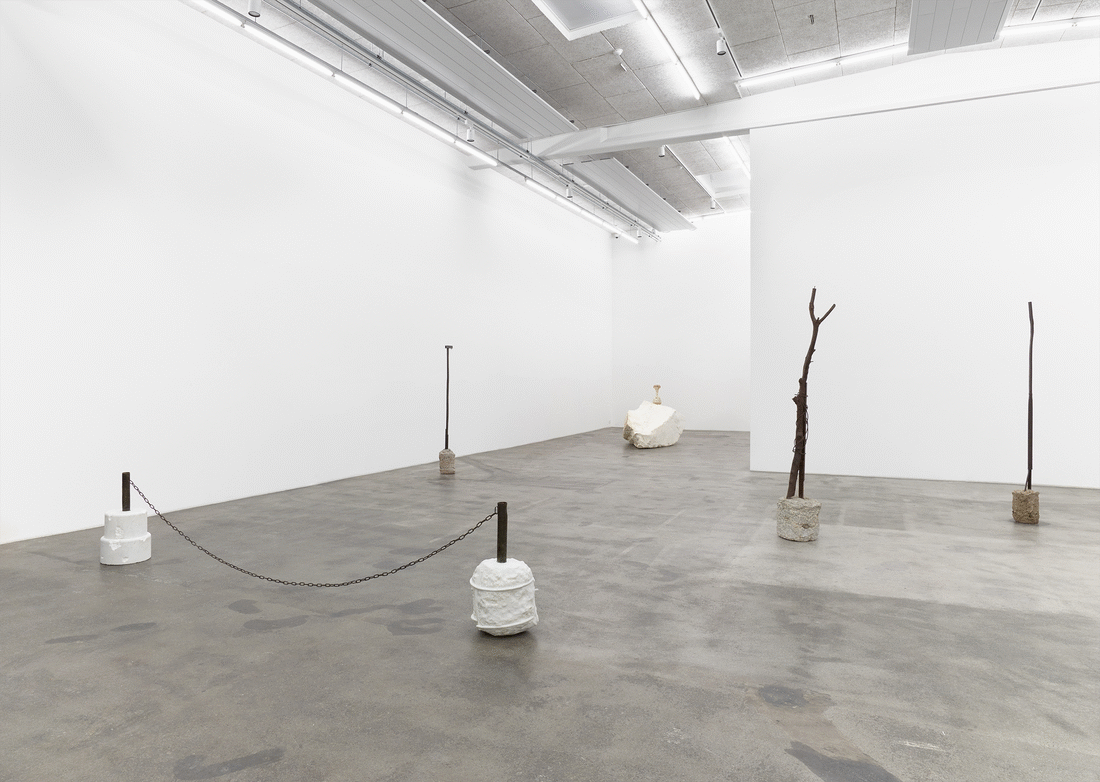Jone Kvie
what comes after certainty
14.11.20 – 27.02.21
There is 2,099 km between Naples and the north-western district of Copenhagen – a twenty-two-hour journey for an able driver. But a rock would require as many million years to travel the same distance to the gallery spaces in Copenhagen. Rocks operate with their own particular chronology, which is why working them up artistically always ends as a permanent monument to the impermanence of civilisation. Contrary to rocks which, at their own sedimentary speed, are constantly on the move, you and I are definitely here just now. It can be an overwhelming experience to be faced with nature and equally hard to describe the experience associated with it. In the same way, it takes time to take in the various elements of Jone Kvie’s latest exhibition.
The point of departure for his new works is a metamorphosed encounter between geology, industry, and Western sculptural history. It is a pragmatic union of readily recognisable elements which re-emerge in a new, but also somewhat homeless form after being worked up by Kvie. They are like entropic deformities, marginalised by man – dissolved by nature. Earlier in his practice, he examined a figurative perception of astronomy; especially the moon as a motif, star clusters, and other visible objects in the sky which, for centuries, have been guiding man’s self-perception and navigation systems. Paradoxically, the moon and stars might be easier to relate to as popular pictorial references than nature in its pure and abstract form. Possibly because modern man, over time, has become alienated to nature.
The central point in the exhibition is the very heavy marble block with an hourglass-like figure cut in onyx. Classical sculpture traditions of the ancient world were formed around marble and onyx. The name ’onyx’ derives from the Greek word for claw or fingernail due to its similarity to the keratinised sheet found on the outer limbs of humans and animals. Both marble and onyx are the results of transformative processes lasting millions of years and, just like the human body, they carry with them accumulations of time. In this way, Kvie’s work extends from the geological processes of his materials. The onyx figure functions as a marker in the exhibition, possibly referring to time as an abstract dimension. Kvie’s choice of material is never insignificant nor accidental, but always applied thoughtfully and strategically. In the exhibition what comes after certainty, he presents universal and abstract issues which have absorbed mankind since time immemorial – it is a contemplative examination which always takes its beginning in the material.




